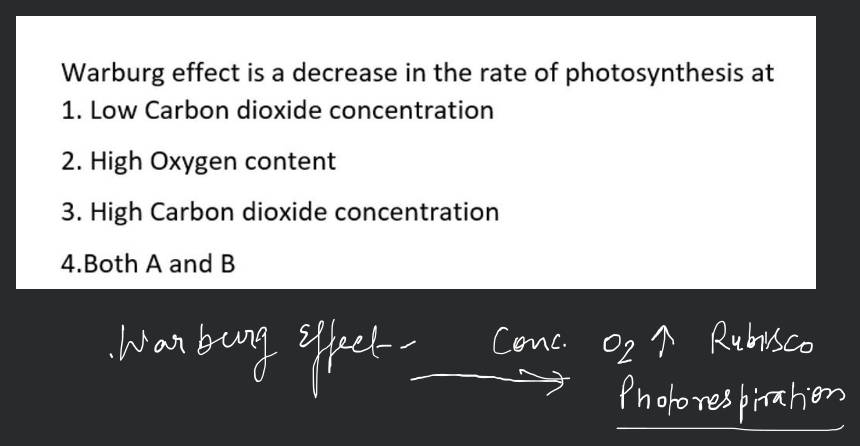Question
Medium
Solving time: 3 mins
Warburg effect is the
 Text solution
Text solution Verified
Verified
Ottowarburg made an observation that inhibits photosynthesis in -plants. This phenomenon is originally known as the Warburg effect. It was latter recognised as the light dependent release of due to oxygenase activity of RuBisCo called photorespiration
Was this solution helpful?
63
Share
Report
Found 4 tutors discussing this question
Discuss this question LIVE
5 mins ago

One destination to cover all your homework and assignment needs
Learn Practice Revision Succeed

Instant 1:1 help, 24x7
60, 000+ Expert tutors

Textbook solutions
Big idea maths, McGraw-Hill Education etc

Essay review
Get expert feedback on your essay

Schedule classes
High dosage tutoring from Dedicated 3 experts
Practice more questions from Photosysnthesis in Higher Plants
Question 3
Medium
Views: 5,873
Reason : Chloroplasts of bundle sheath cells have well developed grana and starch grains.
Practice questions on similar concepts asked by Filo students
Question 1
Views: 5,133
Question 2
Views: 5,201
Question 4
Views: 5,531


Stuck on the question or explanation?
Connect with our Biology tutors online and get step by step solution of this question.
231 students are taking LIVE classes
| Question Text | Warburg effect is the
|
| Updated On | Apr 8, 2023 |
| Topic | Photosysnthesis in Higher Plants |
| Subject | Biology |
| Class | Class 11 |
| Answer Type | Text solution:1 Video solution: 1 |
| Upvotes | 207 |
| Avg. Video Duration | 6 min |


